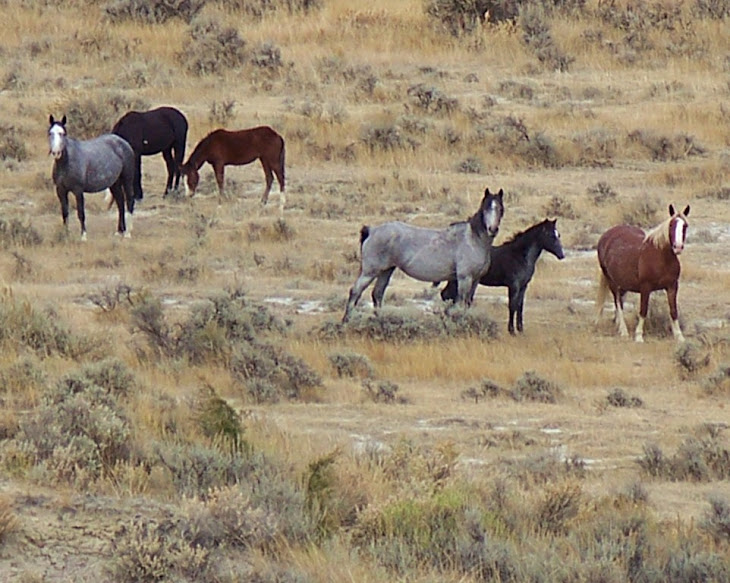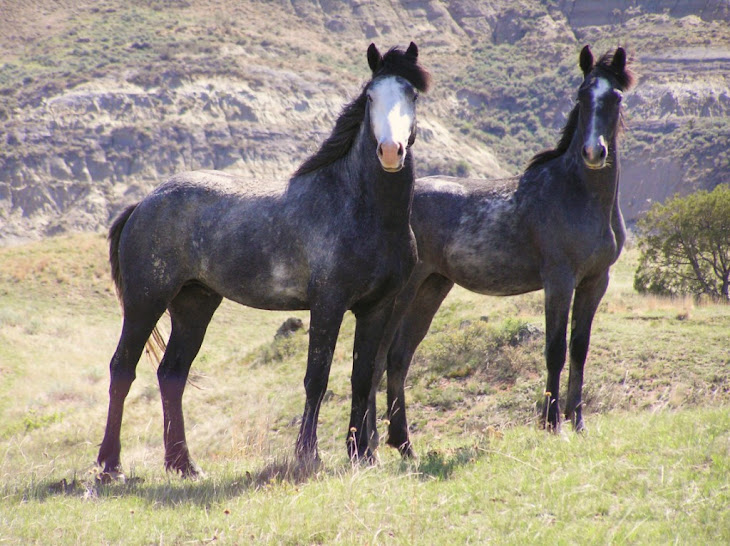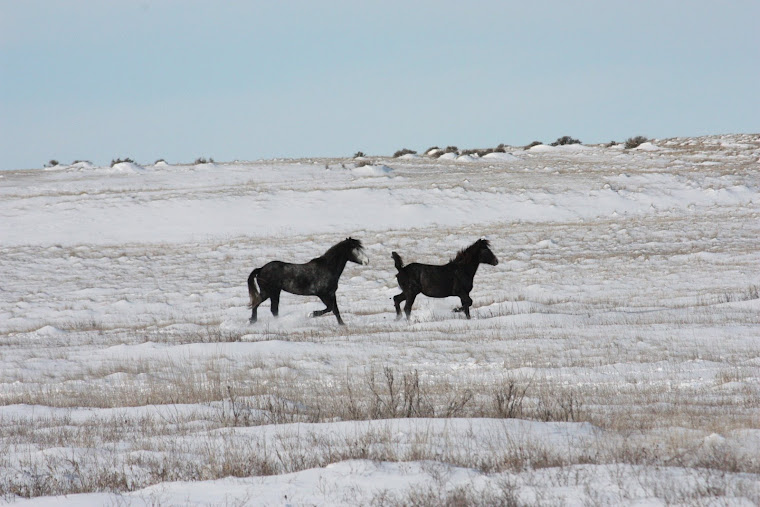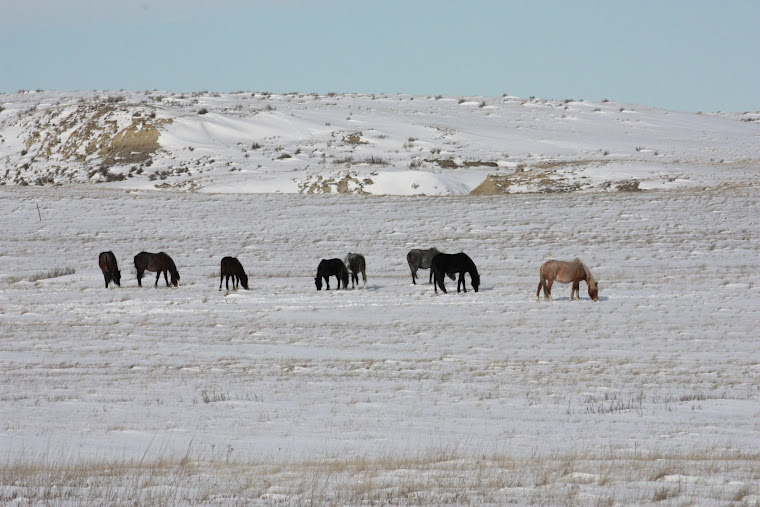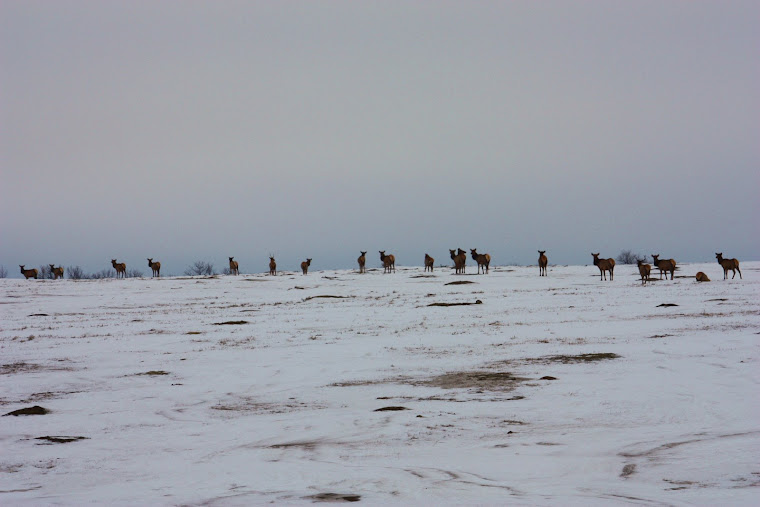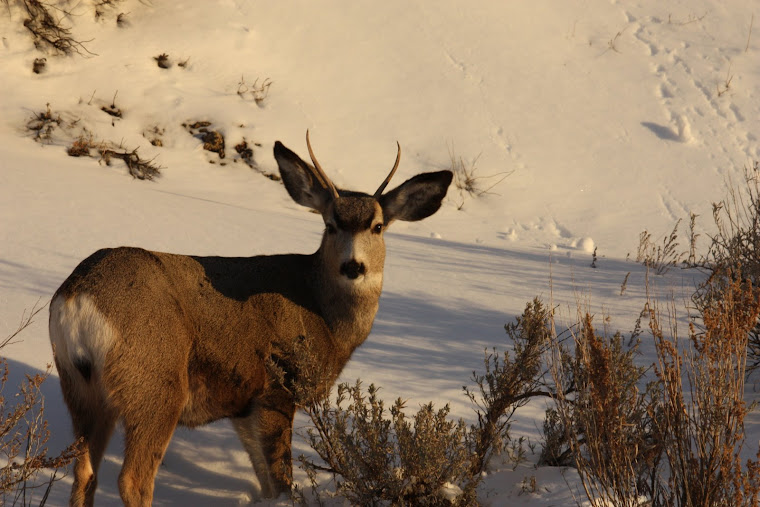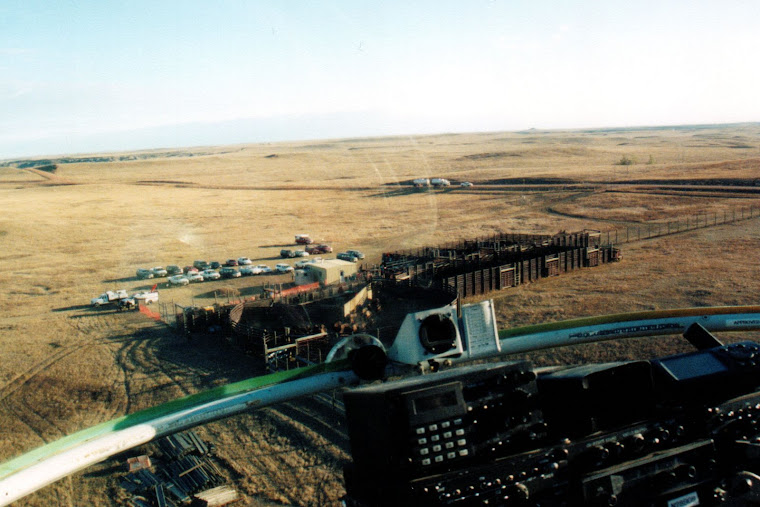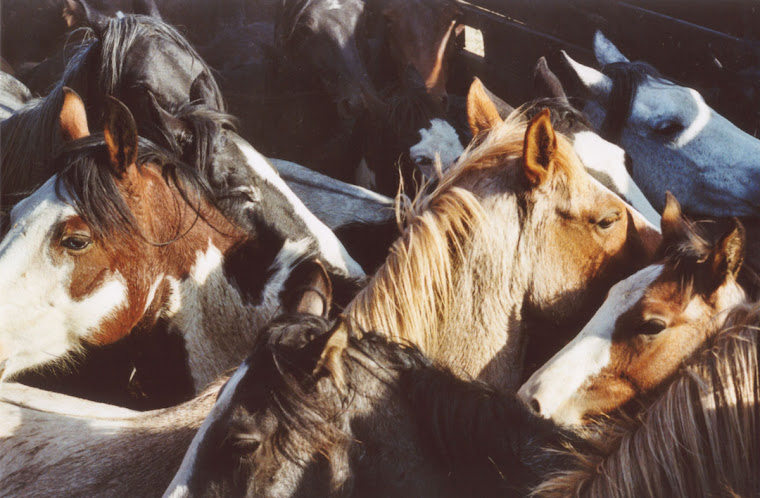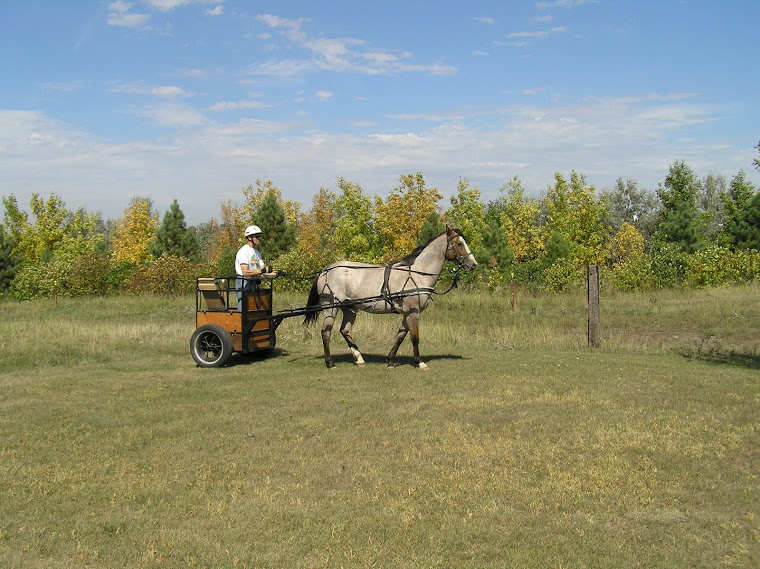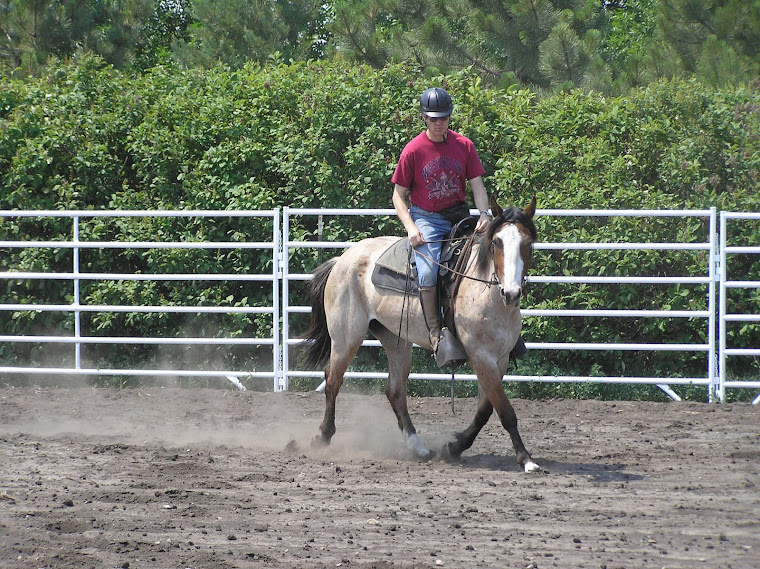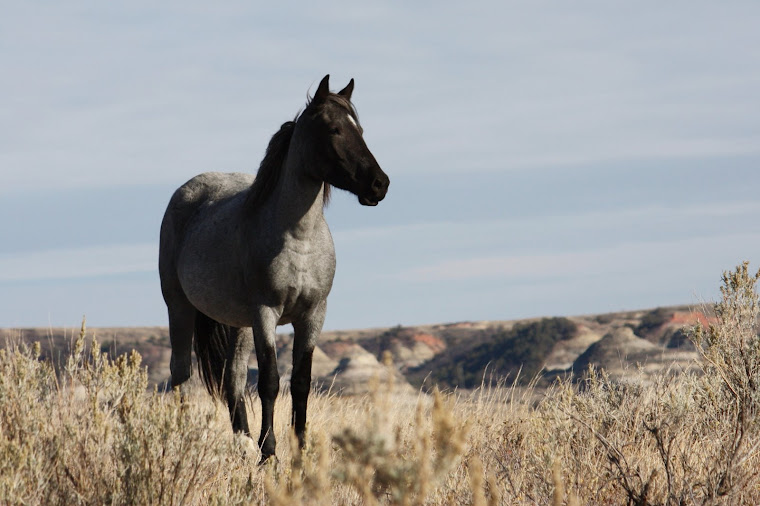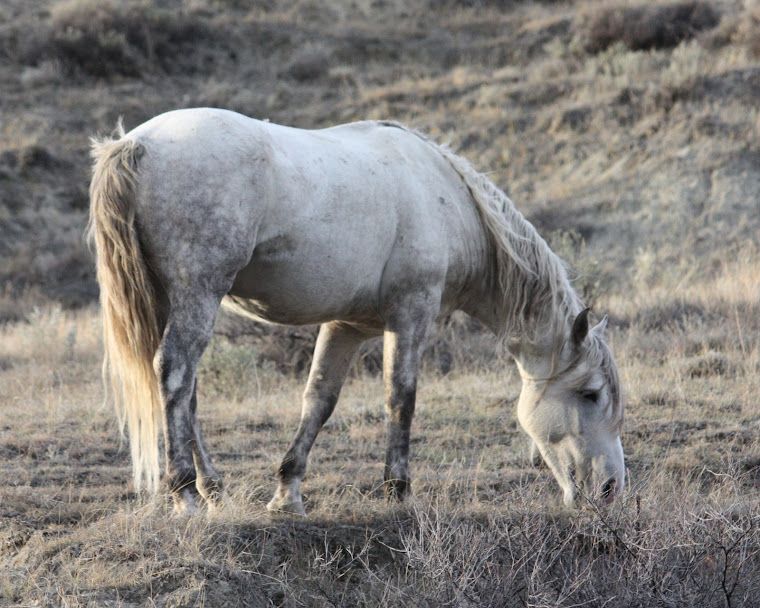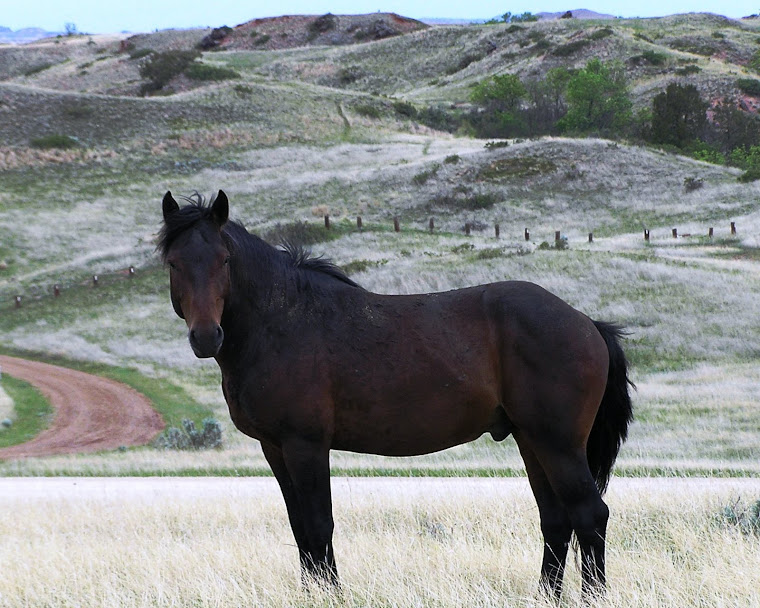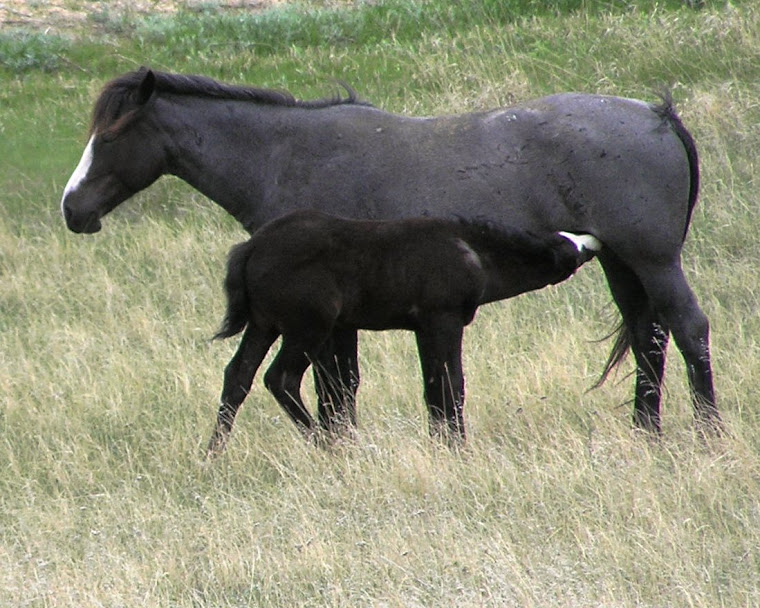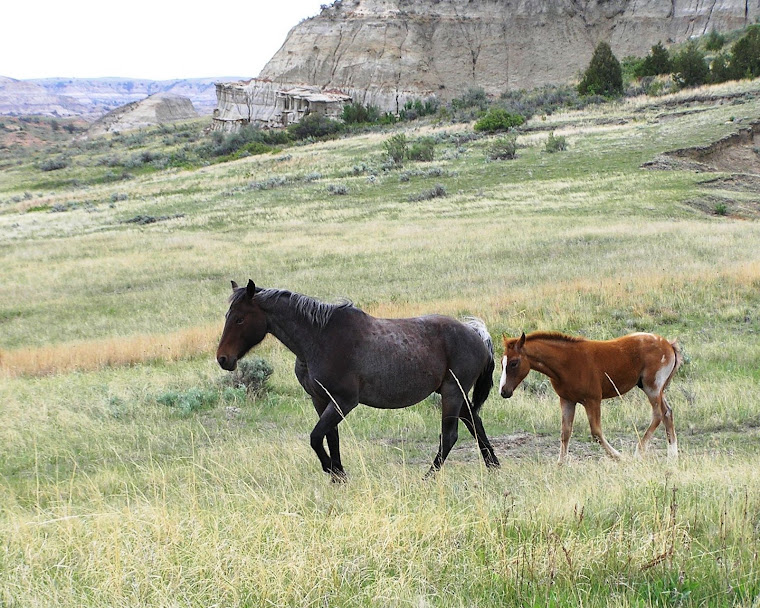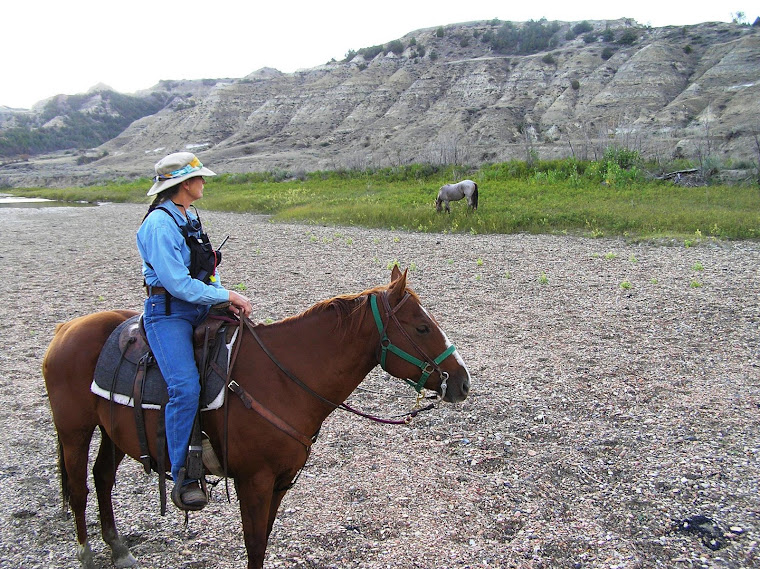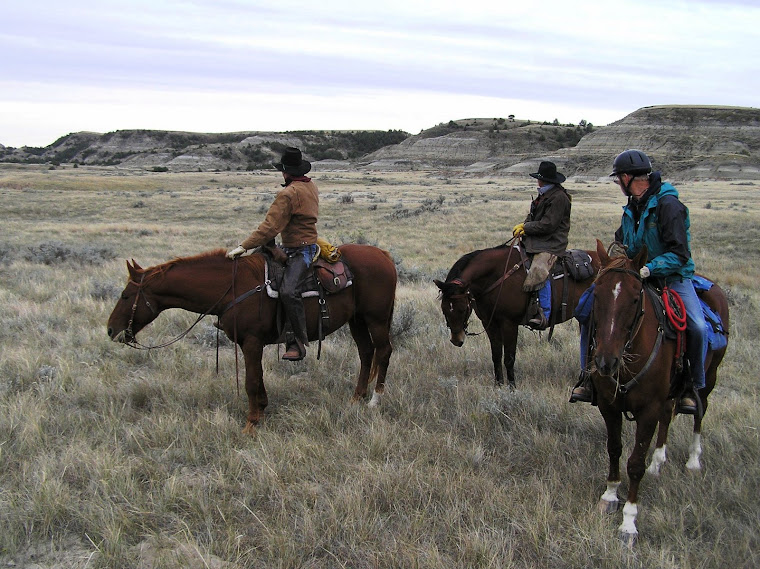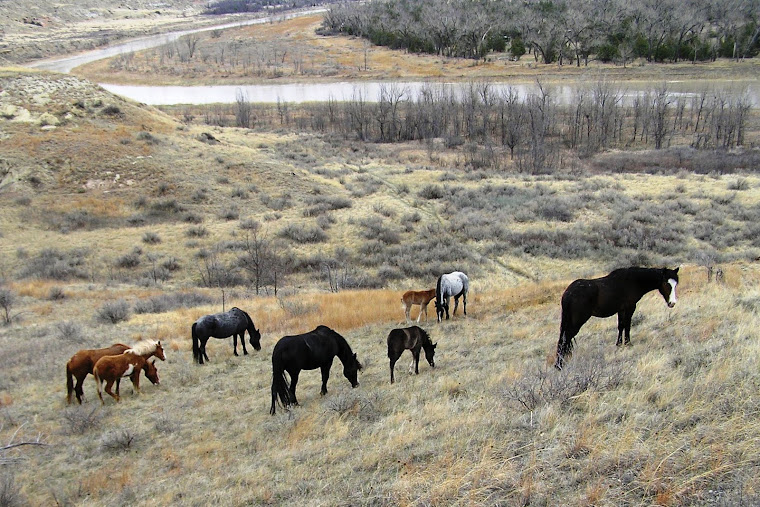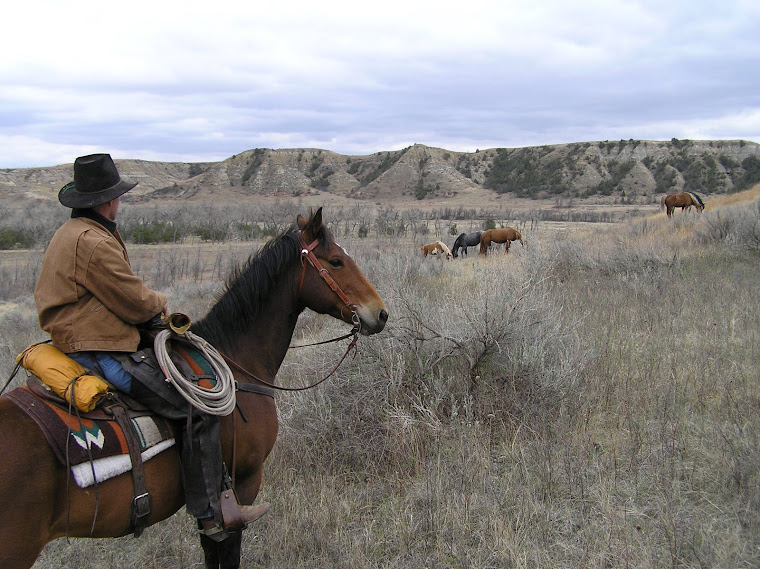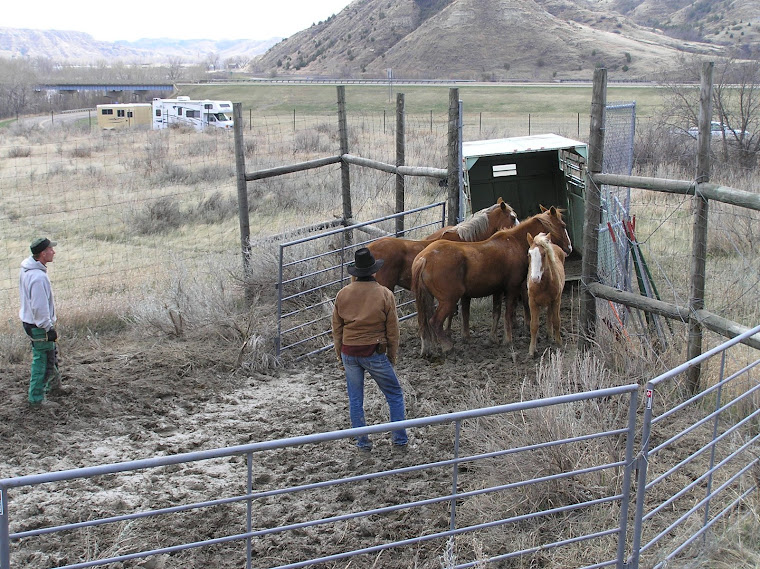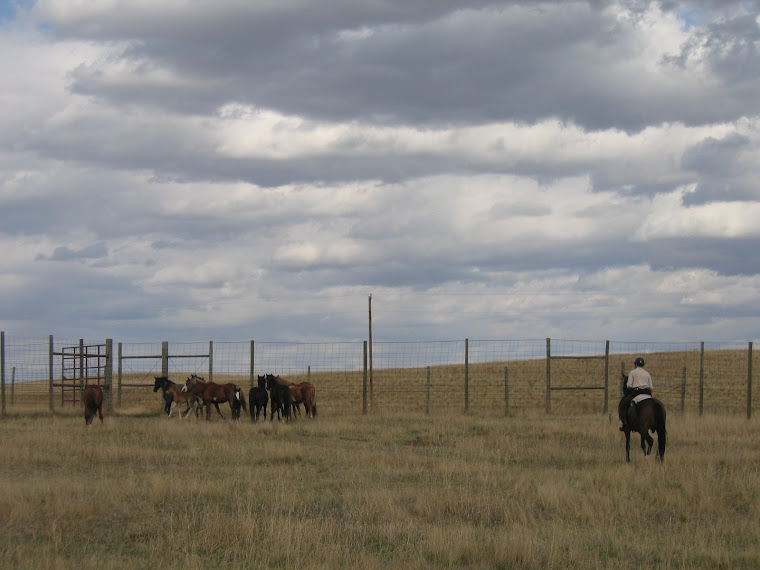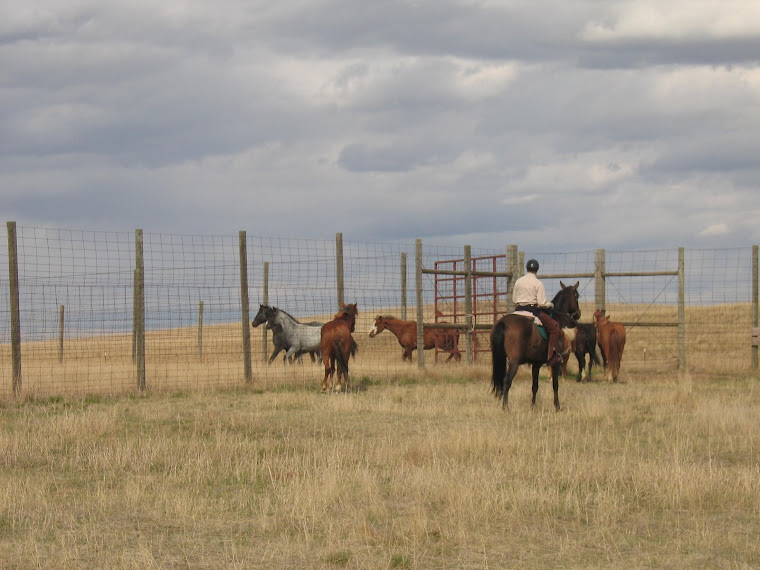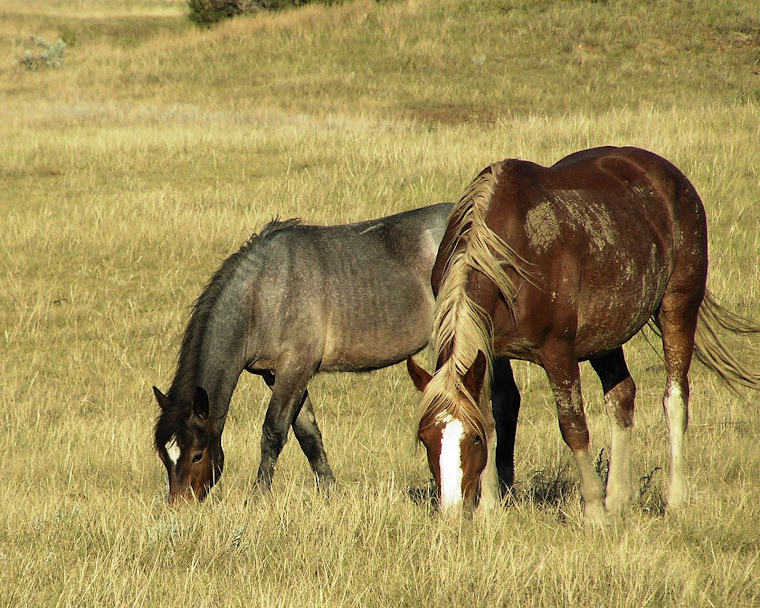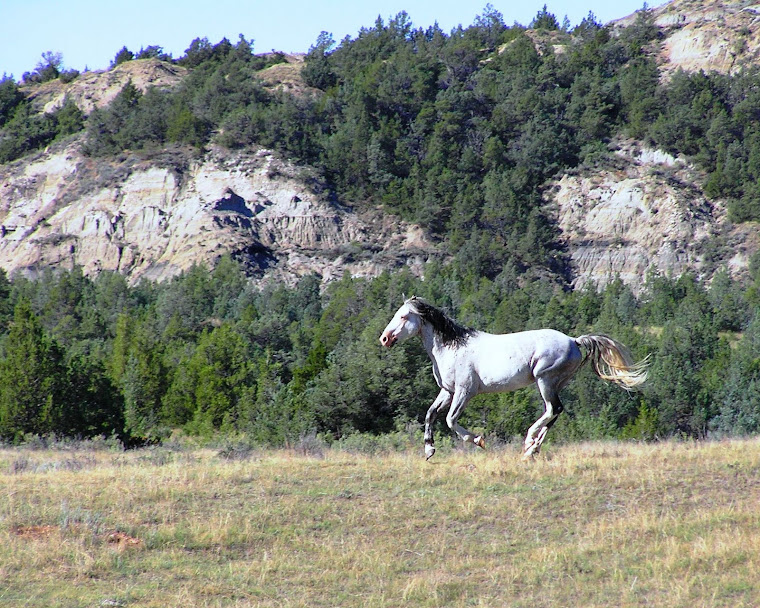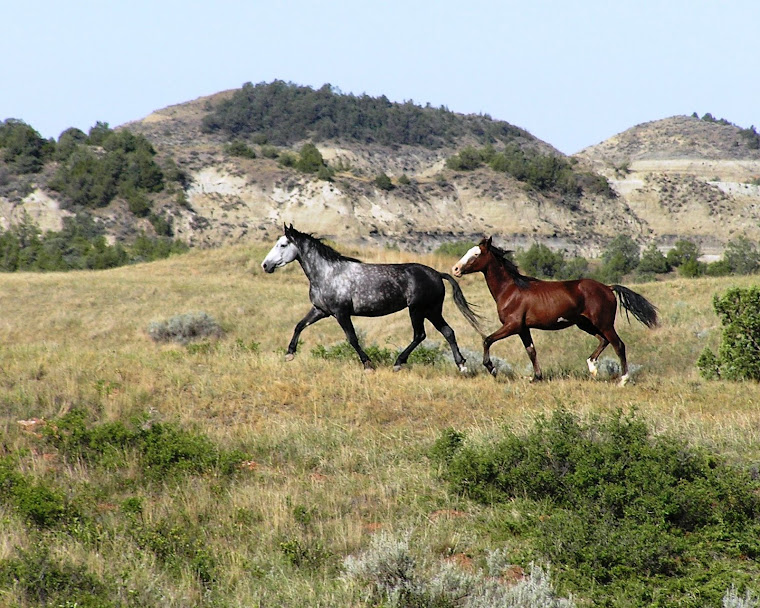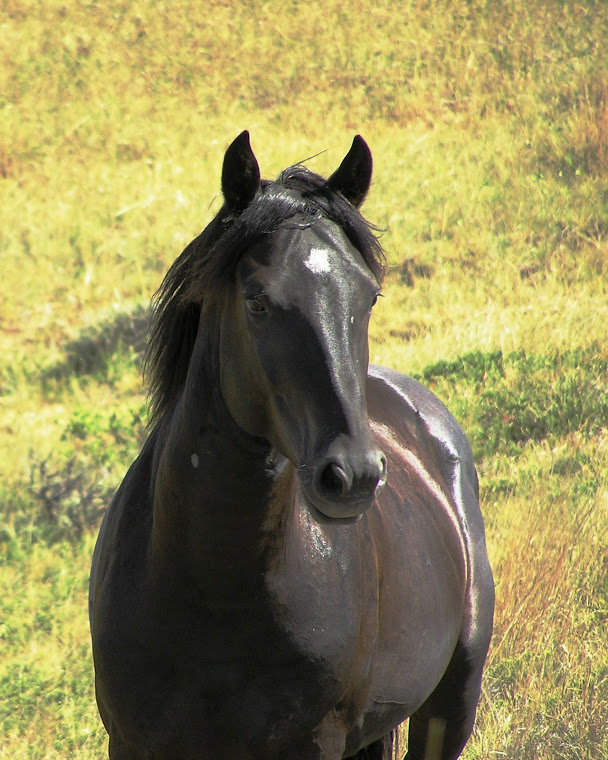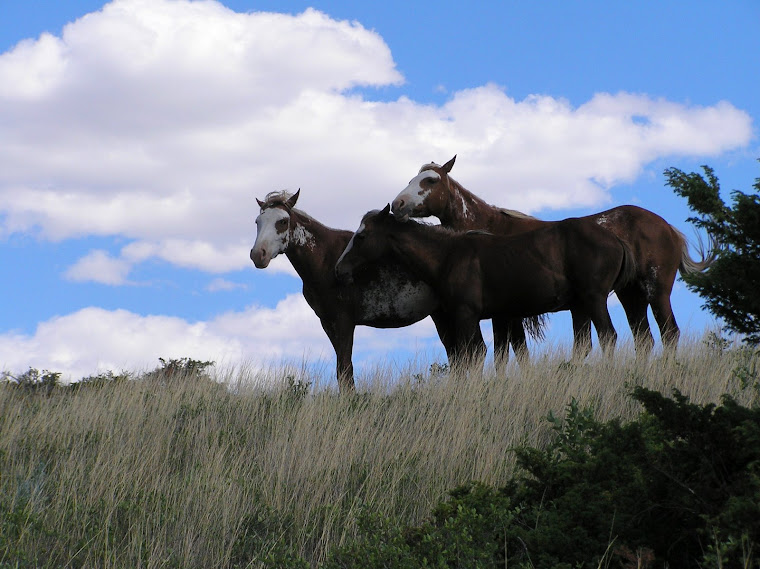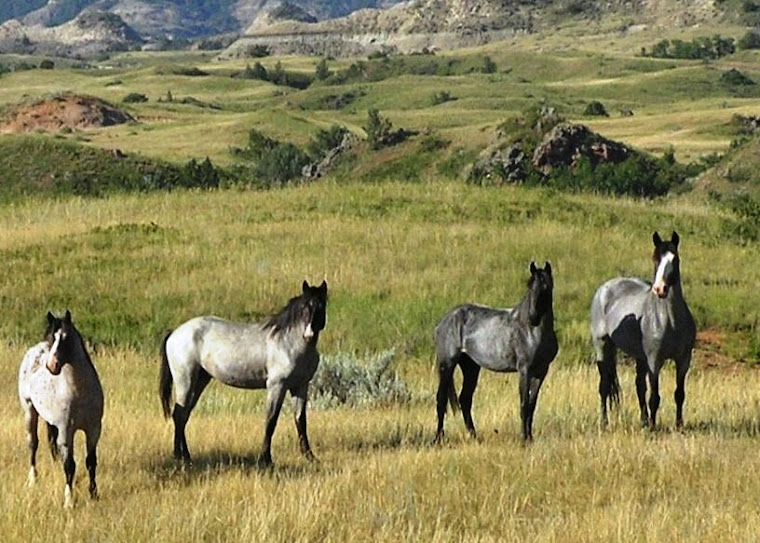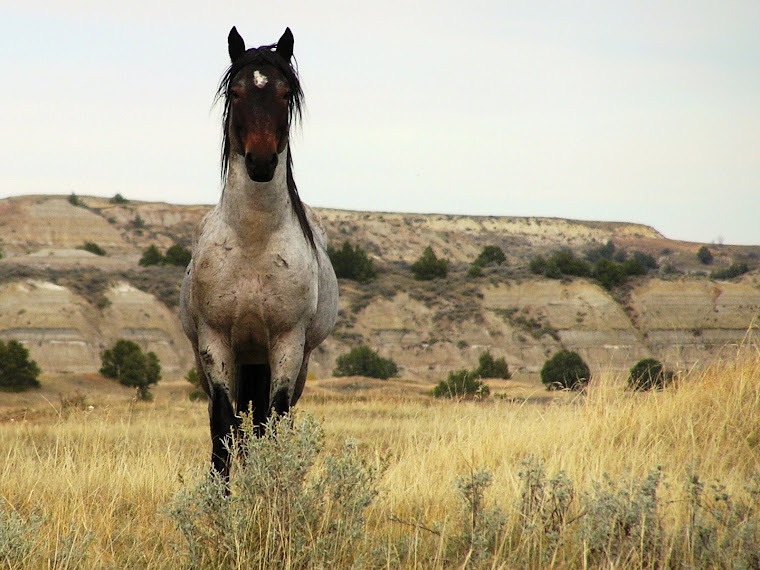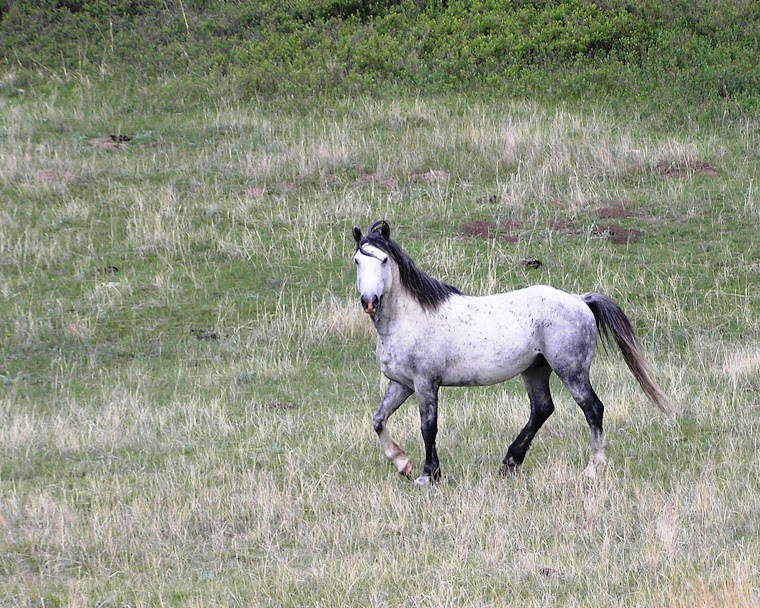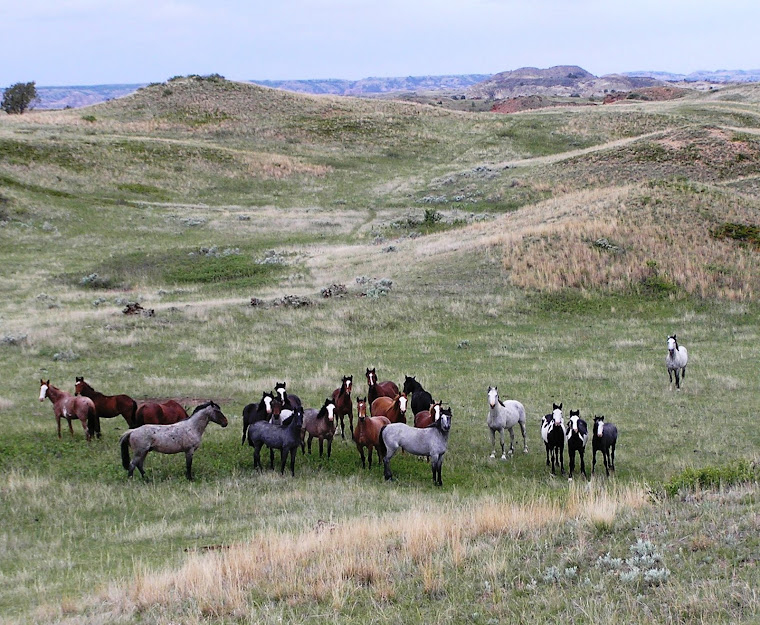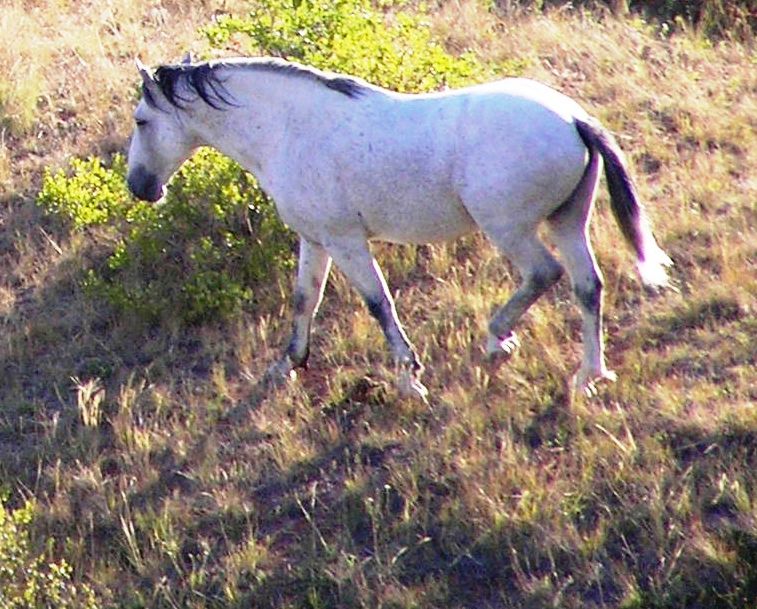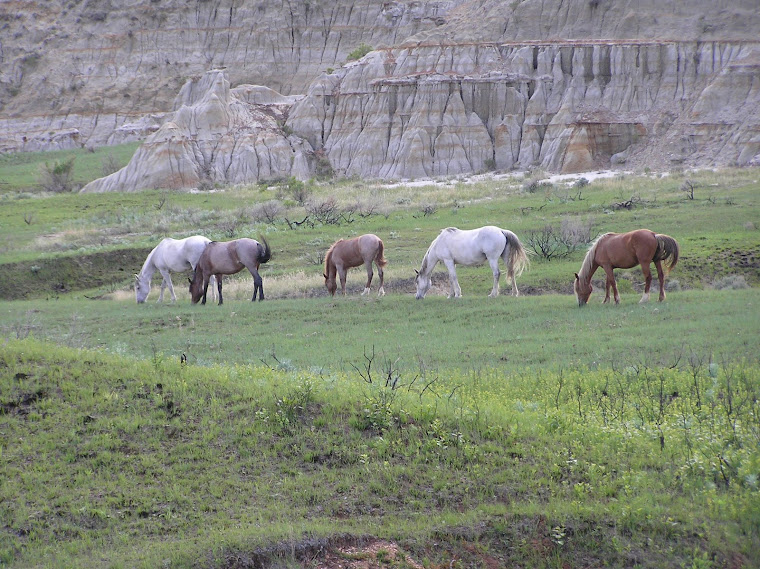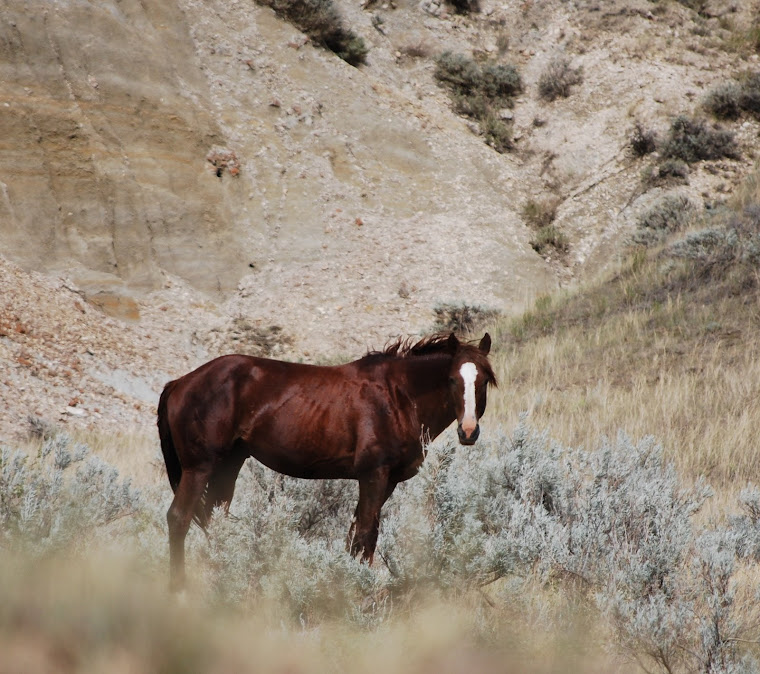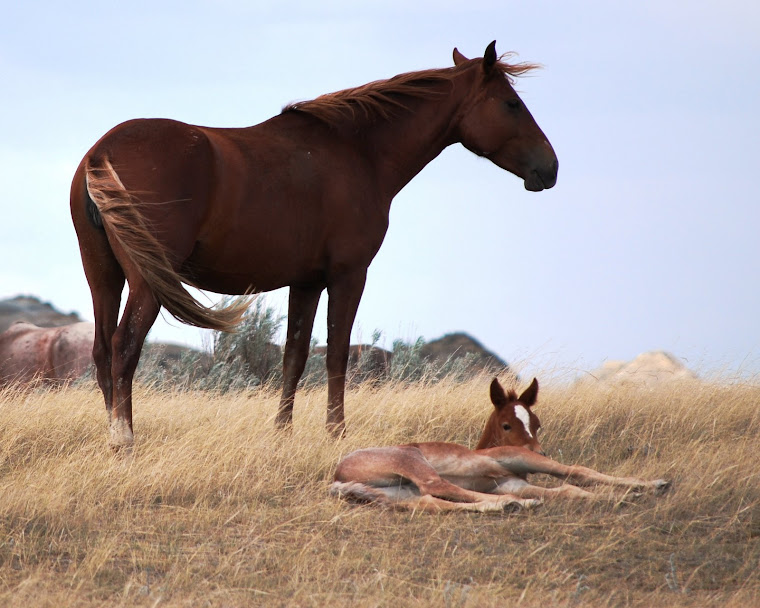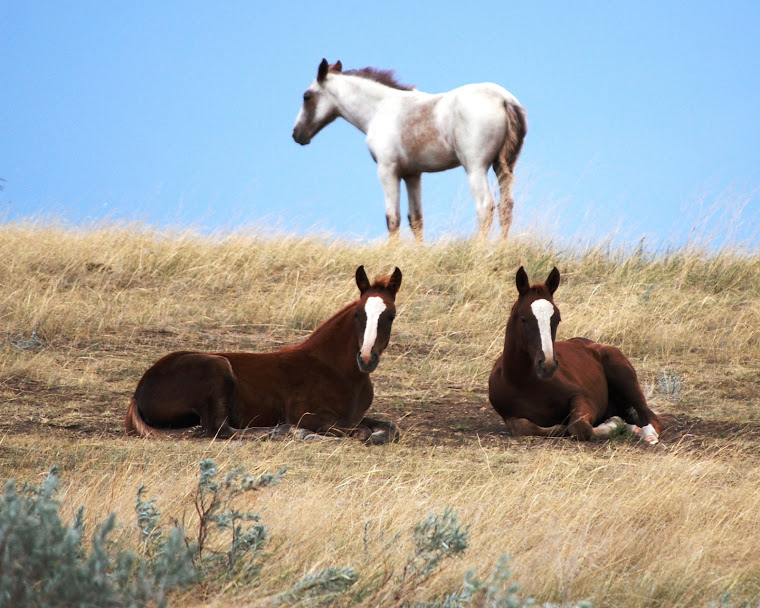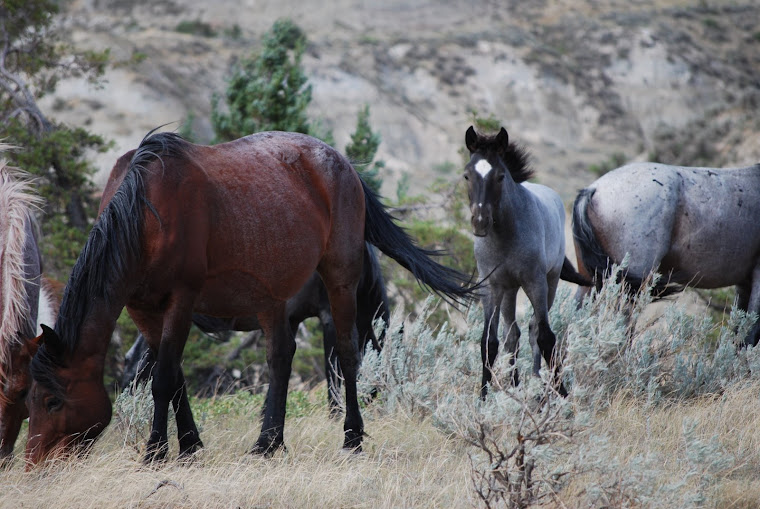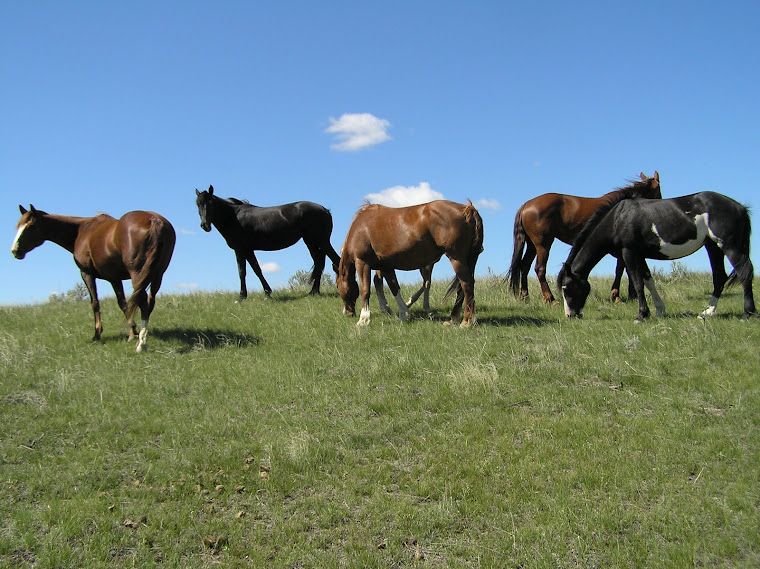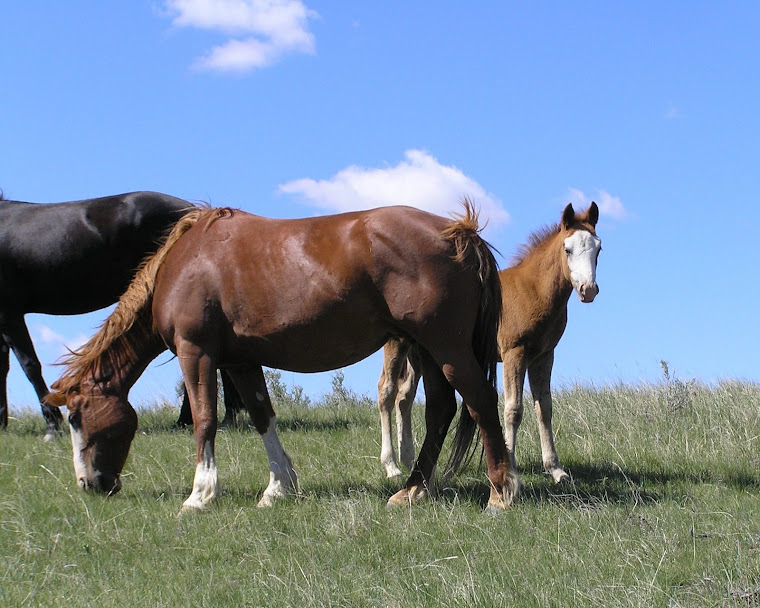During the spring and summer of 2009 there have been 31 foals born in the Park that have survived. Over the past six years, new foal crops have brought the total number of horses to about 164. Since the horses are designated as a demonstration herd to represent the wild bands that Theodore Roosevelt saw and wrote about when he lived in North Dakota, they too are kept from multiplying themselves out of a home. Bison, elk, dear, and pronghorn all share the vegetation in the Park and there are few natural predators for the larger species, so there has to be periodic reductions of the larger animals in order to keep a balance of species and not overgraze the Park Though Park personnel are dedicated to finding better methods of keeping the number of horses under control in the future, it is necessary to round them up this fall and sell off a number of individuals.
These horses have proven themselves to be great using horses for a great number of purposes. They are being used as ranch horses, driving horses, dressage and jumping horses, as well as just good family trail horses. Our experience has been that they are easy to gentle and train and that they like to be around people. They are sturdy, sure footed, strong, and tend to stay sound because of their long history of survival. Weak animals die off and do not reproduce, so those who make it are tough, with strong feet and legs.
In hope that every individual will find a home after the sale, most of the culled horses are going to be young. There will be horses of various colors and all ages from weanlings and yearlings to a few older studs that can still be started by skilled trainers. The horses will be sold at Stockmen's Livestock Exchange on the east side of Dickinson, North Dakota on October 23, 2009.
I will be featuring some of the horses in this blog over the next several weeks and months, but for those who are interested in buying a horse, I can tell you how to get the entire file by age at PhotoBucket. That is the best I can do until I firgure out how to get a link to them.
If you have experience with young, unbroken horses and have the facilities to keep a wild horse safe until it is gentled, then think about giving one of these special horses a home. There are also individuals who are willing to gentle a youngster for someone who is unable to do it himself.
Contact me at horsetracks@btinet.net for more information.
Sunday, August 9, 2009
Thursday, August 6, 2009
HAZARDS, DID I MENTION HAZARDS
THURSDAY, AUGUST
6, 2009
This spring and summer, with the wild horse behavior study, has
been a learning experience in more than just learning more about the horses. We
have learned that one must be aware of what is brewing on the other side of the
butte.
In June, Henry and I had hiked to the flats where the Boicourts had built their farm. We were sitting among the remnants of a foundation, recording the behavior of the double band of Red Face and Singlefoot. Earlier, we had noticed a line of dark clouds forming behind the Boicourt Ridge behind us, but we felt lucky that the storm had blown past us to the south. We were about half way through the 20 minute study when we felt a few raindrops. Maybe we could hold out for the rest of the 10 minutes.........................maybe not. With no warning, it started to hail. We started running for cover like two old western cowboys dodging bullets. The hail was stinging the backs of our legs and any exposed skin. We were running for some kind of shelter from the hail and the lightning. The nearest gully would have to do, so I dashed into the first gully off the nearby ravine. It was full of Poison Ivy! Every inch of soil flourished with the tender, three leafed varmints that were just waiting to spread their venom all over our bodies. We leaped out of the gully and sprinted farther down the side of the ravine until we found a solid clay bank. It was good enough; we clamored over the lip and huddled against the clay for protection. It didn't really provide any protection from the hail, but it put us below the rest of the flat so we weren't puny moving targets for the lightning bolts.
We must have been laying in our fetal position in the clay for at least 20 minutes until the hail finally stopped and the rain let up some. While a light rain continued, the question came to me whether we should make a run for the vehicle a mile away or wait for the sun to come back out and finish the study. Turning over on my now muddy bank, I caught a look at Henry for the first time since our escape from certain death at the Boicourt homestead. His heavy blue jeans now encased in ice, he was shaking uncontrollably, like he had dunked himself in a lake in the middle of January. I guessed he didn't want to wait for the sun, even though I could now see blue sky over Boicourt Ridge. We drug ourselves out of our muddy sanctuary and slogged back to the protection of old Air Force Blue.
The sun did come out and we did dry eventually and complete more studies that day. But, it wasn't to be our last encounter with Mother Nature's wrath.
A few weeks later I was out with a tracking friend. Henry and Hedrick were also going out as a team so that we could get more bands observed. The friend had been in Medora for several weeks and still hadn't been able to track down Blaze to get any good photos of his band. I knew they had been hanging on the flats east of Buck Hill, so we headed for Buck Hill to see if we could spot them. There they were where I expected to find them, about a mile and a half down on the flats. It looked like a nice evening for a hike; it wasn't too hot anymore and the clouds we could see did not look threatening. We parked the truck on Buck Hill and headed for the horses. It was a pleasant walk that only took about 20 minutes and it was still early evening.
Blaze is always a lot of fun to photograph because he is pretty wary, so always gives us a good show. We wanted some photos of Little Brother's Girl's filly, Sheila, and Domino's new colt, Talkington. They were quite cooperative, letting us get close enough for some photos before we sat down to start the study. As we recorded their behavior every minute for 20 minutes, we noticed that the sky was getting darker, but we figured it was worth getting a little wet, to get good photos and a study of the illusive band. About the time we finished, it began to sprinkle.
By this time the clouds were building quickly in all directions, but it looked as if the storm might blow off to the north. I commented on the strange looking, dark clouds over Buck Hill as we looked for some cover to ride out the showers. Nearby was a deep ravine, and having had experience with the protective quality of ravines in the recent past, I decided it was our best bet. We found a flat spot at the bottom of the ravine where the bank rose about 20 feet above our heads and there was a nice spreading cottonwood that barely reached above the bank. We settled in for what we hoped to be a safe reprieve from a short squall.
Dressed only in light clothing, we were the most concerned with keeping out cameras dry. We laughed about getting caught in a storm AGAIN as the rain fell. I was concerned that Henry might be looking for us, but my phone had no service and I didn't think he had a Park radio, but it was worth a try, so I turned it on. We could hear the conversations of local law enforcement monitoring the storm. We heard someone say that a tornado was spotted just south of Medora heading..........................sssssssssssssssscccccccccckkkkkkkkkkkkkk. Static, nothing but static. Again we heard someone say something about having checked out the problem at Painted Canyon, but we didn't know what the problem might be. She asked, "Where is Painted Canyon from here?" We were about a half mile from Painted Canyon! We were still hoping that most of the storm would go around us when we heard the report that the line of severe thunderstorms reached from the South Dakota border to the Canadian border! It was not looking good for the storms to miss us and the radio was not raising any response.
As the rain poured and soaked us to the skin, we began to watch the water rise in the ravine. I said we had to have a plan of where we were going to get out if the water rose too quickly. The clay sides of the ravine were turning to gray slime which would not be easy to climb. Pressing our water logged bodies as close as we could to the tree, we watched the water rise. It seemed that the storm couldn't get much more miserable when I heard a "plunk" on the brim of my hat. Now it was hailing! I was wishing I had had the brains to bring a rain coat when the rain suddenly stopped-this was our chance!
As I had expected, the climb out of the ravine was a challenge with the slick clay and not a lot to hang on to in order to pull ourselves out. However, we were not about to let a little mud stop us; I found a way to the top and we were on our way back to the truck. We saw the horses just waiting out the storm were tempted to stop for more photos, but looking at the clouds to the south, we decided it was prudent to keep going. Our next obstacle was another deep gully that was running fairly deep with muddy water. We had to scramble another half mile north, toward its source to find a place narrow enough to jump it. On the way out, we had walked around the small, flat butte that had burned when struck by lightning several years ago, but since we had already gone out of our way to the north, it seemed quicker to go over it.
We headed for a green spot on the butte that looked like it might have some decent footing. Pulling ourselves over, around and through the maze of burned Junipers was like going through an obstacle course at boot camp. We found that dead trees don't always have much of a root system and don't always hold when you pull on them. We also found that the green we hoped was grass was actually thistles, millions of thistles. The other gal's comment as we drug ourselves through them was, " Eeuuhh, these things are covered with thorns, but Oh, look they have pretty purple flowers!"
Having reached the top of the butte that was more like the landscape of the moon than the Badlands, we had to find a place to get down that wasn't too steep or too slick. Success! We were over the butte and headed across the flats again. At this point, the flats were more like one large lake, but we couldn't worry about our boots when we still had gullies to cross. While I was engrossed in looking for a place to jump another deep gully, my companion stopped me short with the warning, "There's a rattle snake coiled right in front of you!" Taking a 180 away from the snake, we headed into another lake of muddy water. About that time the next line of storms caught up to us and the lightning crashed around us. It was not lost on us that we were standing ankle deep in water; we grabbed one another and screamed like little school girls. If we were going to fry, we were going to fry together. Though my friend said later that she saw an orange glow around me when the lightning hit, we survived, by God's grace. Yes, by now we were not laughing anymore; we were praying, out loud! The only way to stay out of the water was to skirt a butte. Of course, the butte was bentonite, all bentonite. Snakes, lakes, or bentonite? We chose bentonite. Skidding and sliding, we made it thought the bentonite and on to another lake, another gully, and finally to the bottom of Buck Hill, where our nice warm, dry truck was waiting for us at the top. Somewhere on the trip across the bottoms, she had asked what we would do if it got dark before we got to the truck. I said it wasn't an option, WE WOULD MAKE IT BACK TO THE TRUCK!
Buck Hill is steep there, very steep, and by now it was running with water and mud. Going up the trail would be impossible, so we would have to find a way through the trees. Picking our way carefully through the trees, using their limbs, small bushes, tufts of grass, or whatever else we could find to pull ourselves up, we made it up the 150 ft, or so, of Buck Hill. You can believe we celebrated when we saw the truck and Henry waiting for us!
We had been out in the storm for 3 hours. Since we lived through our ordeal, we laugh about it. It was quite funny; we wished we had video of us making the trip back to the truck, but we found out the next day that the storm destroyed 100 homes in Dickinson. Thank the Lord, it didn't destroy us.
In June, Henry and I had hiked to the flats where the Boicourts had built their farm. We were sitting among the remnants of a foundation, recording the behavior of the double band of Red Face and Singlefoot. Earlier, we had noticed a line of dark clouds forming behind the Boicourt Ridge behind us, but we felt lucky that the storm had blown past us to the south. We were about half way through the 20 minute study when we felt a few raindrops. Maybe we could hold out for the rest of the 10 minutes.........................maybe not. With no warning, it started to hail. We started running for cover like two old western cowboys dodging bullets. The hail was stinging the backs of our legs and any exposed skin. We were running for some kind of shelter from the hail and the lightning. The nearest gully would have to do, so I dashed into the first gully off the nearby ravine. It was full of Poison Ivy! Every inch of soil flourished with the tender, three leafed varmints that were just waiting to spread their venom all over our bodies. We leaped out of the gully and sprinted farther down the side of the ravine until we found a solid clay bank. It was good enough; we clamored over the lip and huddled against the clay for protection. It didn't really provide any protection from the hail, but it put us below the rest of the flat so we weren't puny moving targets for the lightning bolts.
We must have been laying in our fetal position in the clay for at least 20 minutes until the hail finally stopped and the rain let up some. While a light rain continued, the question came to me whether we should make a run for the vehicle a mile away or wait for the sun to come back out and finish the study. Turning over on my now muddy bank, I caught a look at Henry for the first time since our escape from certain death at the Boicourt homestead. His heavy blue jeans now encased in ice, he was shaking uncontrollably, like he had dunked himself in a lake in the middle of January. I guessed he didn't want to wait for the sun, even though I could now see blue sky over Boicourt Ridge. We drug ourselves out of our muddy sanctuary and slogged back to the protection of old Air Force Blue.
The sun did come out and we did dry eventually and complete more studies that day. But, it wasn't to be our last encounter with Mother Nature's wrath.
A few weeks later I was out with a tracking friend. Henry and Hedrick were also going out as a team so that we could get more bands observed. The friend had been in Medora for several weeks and still hadn't been able to track down Blaze to get any good photos of his band. I knew they had been hanging on the flats east of Buck Hill, so we headed for Buck Hill to see if we could spot them. There they were where I expected to find them, about a mile and a half down on the flats. It looked like a nice evening for a hike; it wasn't too hot anymore and the clouds we could see did not look threatening. We parked the truck on Buck Hill and headed for the horses. It was a pleasant walk that only took about 20 minutes and it was still early evening.
Blaze is always a lot of fun to photograph because he is pretty wary, so always gives us a good show. We wanted some photos of Little Brother's Girl's filly, Sheila, and Domino's new colt, Talkington. They were quite cooperative, letting us get close enough for some photos before we sat down to start the study. As we recorded their behavior every minute for 20 minutes, we noticed that the sky was getting darker, but we figured it was worth getting a little wet, to get good photos and a study of the illusive band. About the time we finished, it began to sprinkle.
By this time the clouds were building quickly in all directions, but it looked as if the storm might blow off to the north. I commented on the strange looking, dark clouds over Buck Hill as we looked for some cover to ride out the showers. Nearby was a deep ravine, and having had experience with the protective quality of ravines in the recent past, I decided it was our best bet. We found a flat spot at the bottom of the ravine where the bank rose about 20 feet above our heads and there was a nice spreading cottonwood that barely reached above the bank. We settled in for what we hoped to be a safe reprieve from a short squall.
Dressed only in light clothing, we were the most concerned with keeping out cameras dry. We laughed about getting caught in a storm AGAIN as the rain fell. I was concerned that Henry might be looking for us, but my phone had no service and I didn't think he had a Park radio, but it was worth a try, so I turned it on. We could hear the conversations of local law enforcement monitoring the storm. We heard someone say that a tornado was spotted just south of Medora heading..........................sssssssssssssssscccccccccckkkkkkkkkkkkkk. Static, nothing but static. Again we heard someone say something about having checked out the problem at Painted Canyon, but we didn't know what the problem might be. She asked, "Where is Painted Canyon from here?" We were about a half mile from Painted Canyon! We were still hoping that most of the storm would go around us when we heard the report that the line of severe thunderstorms reached from the South Dakota border to the Canadian border! It was not looking good for the storms to miss us and the radio was not raising any response.
As the rain poured and soaked us to the skin, we began to watch the water rise in the ravine. I said we had to have a plan of where we were going to get out if the water rose too quickly. The clay sides of the ravine were turning to gray slime which would not be easy to climb. Pressing our water logged bodies as close as we could to the tree, we watched the water rise. It seemed that the storm couldn't get much more miserable when I heard a "plunk" on the brim of my hat. Now it was hailing! I was wishing I had had the brains to bring a rain coat when the rain suddenly stopped-this was our chance!
As I had expected, the climb out of the ravine was a challenge with the slick clay and not a lot to hang on to in order to pull ourselves out. However, we were not about to let a little mud stop us; I found a way to the top and we were on our way back to the truck. We saw the horses just waiting out the storm were tempted to stop for more photos, but looking at the clouds to the south, we decided it was prudent to keep going. Our next obstacle was another deep gully that was running fairly deep with muddy water. We had to scramble another half mile north, toward its source to find a place narrow enough to jump it. On the way out, we had walked around the small, flat butte that had burned when struck by lightning several years ago, but since we had already gone out of our way to the north, it seemed quicker to go over it.
We headed for a green spot on the butte that looked like it might have some decent footing. Pulling ourselves over, around and through the maze of burned Junipers was like going through an obstacle course at boot camp. We found that dead trees don't always have much of a root system and don't always hold when you pull on them. We also found that the green we hoped was grass was actually thistles, millions of thistles. The other gal's comment as we drug ourselves through them was, " Eeuuhh, these things are covered with thorns, but Oh, look they have pretty purple flowers!"
Having reached the top of the butte that was more like the landscape of the moon than the Badlands, we had to find a place to get down that wasn't too steep or too slick. Success! We were over the butte and headed across the flats again. At this point, the flats were more like one large lake, but we couldn't worry about our boots when we still had gullies to cross. While I was engrossed in looking for a place to jump another deep gully, my companion stopped me short with the warning, "There's a rattle snake coiled right in front of you!" Taking a 180 away from the snake, we headed into another lake of muddy water. About that time the next line of storms caught up to us and the lightning crashed around us. It was not lost on us that we were standing ankle deep in water; we grabbed one another and screamed like little school girls. If we were going to fry, we were going to fry together. Though my friend said later that she saw an orange glow around me when the lightning hit, we survived, by God's grace. Yes, by now we were not laughing anymore; we were praying, out loud! The only way to stay out of the water was to skirt a butte. Of course, the butte was bentonite, all bentonite. Snakes, lakes, or bentonite? We chose bentonite. Skidding and sliding, we made it thought the bentonite and on to another lake, another gully, and finally to the bottom of Buck Hill, where our nice warm, dry truck was waiting for us at the top. Somewhere on the trip across the bottoms, she had asked what we would do if it got dark before we got to the truck. I said it wasn't an option, WE WOULD MAKE IT BACK TO THE TRUCK!
Buck Hill is steep there, very steep, and by now it was running with water and mud. Going up the trail would be impossible, so we would have to find a way through the trees. Picking our way carefully through the trees, using their limbs, small bushes, tufts of grass, or whatever else we could find to pull ourselves up, we made it up the 150 ft, or so, of Buck Hill. You can believe we celebrated when we saw the truck and Henry waiting for us!
We had been out in the storm for 3 hours. Since we lived through our ordeal, we laugh about it. It was quite funny; we wished we had video of us making the trip back to the truck, but we found out the next day that the storm destroyed 100 homes in Dickinson. Thank the Lord, it didn't destroy us.
THE BOICOURTS
One of our favorite places to observe the wild horses is Boicourt Ridge. On a hot summer day it is not unusual to find several bands fighting flies by catching the breezes on the high grassy ridge or rolling in the mud flats below. Stallions vie for mares and bachelors practice their skills on the rolling grassy butte. Sometimes bands are hidden in grassy draws or in the small, quiet valley nestled between the buttes north of the ridge, but there are almost always horses to be found there. Last spring I found our how the area got it's name.
When a friend sent my blog to her mom, she sent it on to her cousin, Ramona. Ramona sent me a quick email to tell me that her mother was Roxie Biocourt, who had grown up in what is now the Boicourt area of the Park.
In 1909 Albert (Bert) and Nora Boicourt brought their little family of three girls to North Dakota from Westport Indiana. A stone mason, Bert felt there was a future for himself and his family in ND. Upon arriving in the Badlands, they and two other families pitched tents on the Talkington Ranch until they could move into more permanent housing. By fall of the following year they were able to build on 160 acres including a spring, rolling prairie, tree lined draws and the flats below. Finding the water to be bad at the home site, Bert built a system to pipe fresh water down to a cistern from what is now known as Boicourt Spring. The Boicourts and several other families thrived in the little community they called Pleasant Flat.
Though the weather was often harsh and the crops not always good, the family was comfortable and happy in their little paper lined clapboard house. Bert tilled the land and kept the animals fed while Nora took care of her family and home. In the evenings she would spend hours braiding rugs and piecing quilts while Bert read aloud to the children. One of their favorite activities was singing while Nora played the organ and Bert accompanied her on the harmonica or violin. All the girls became accomplished musicians, learning the instruments from their parents. Also riding in the hills or off to Medora on an errand was an activity the girls enjoyed.
During their stay in the area, Bert found many opportunities to use his stone masonry skills. With the birth of Theodore Roosevelt National Park there was a need for various stone structures. Bert headed a crew who built nearly 40 stone bridges for the Park road, entrance sign structures, and the Contact House, which is now known as the Old Entrance. His initials can be found etched in the fireplace of that historic structure. In Medora they built DeMores Park to commemorate the Marquis' part in the History of the Badlands. Ramona sent a photo of her overlooking the Pleasant Flat.
In keeping with my theme of historic names for the new foals this year, we have a Roxie and a Boicourt. These foals will be included in a coming post on all the 2009 foals.
When a friend sent my blog to her mom, she sent it on to her cousin, Ramona. Ramona sent me a quick email to tell me that her mother was Roxie Biocourt, who had grown up in what is now the Boicourt area of the Park.
In 1909 Albert (Bert) and Nora Boicourt brought their little family of three girls to North Dakota from Westport Indiana. A stone mason, Bert felt there was a future for himself and his family in ND. Upon arriving in the Badlands, they and two other families pitched tents on the Talkington Ranch until they could move into more permanent housing. By fall of the following year they were able to build on 160 acres including a spring, rolling prairie, tree lined draws and the flats below. Finding the water to be bad at the home site, Bert built a system to pipe fresh water down to a cistern from what is now known as Boicourt Spring. The Boicourts and several other families thrived in the little community they called Pleasant Flat.
Though the weather was often harsh and the crops not always good, the family was comfortable and happy in their little paper lined clapboard house. Bert tilled the land and kept the animals fed while Nora took care of her family and home. In the evenings she would spend hours braiding rugs and piecing quilts while Bert read aloud to the children. One of their favorite activities was singing while Nora played the organ and Bert accompanied her on the harmonica or violin. All the girls became accomplished musicians, learning the instruments from their parents. Also riding in the hills or off to Medora on an errand was an activity the girls enjoyed.
During their stay in the area, Bert found many opportunities to use his stone masonry skills. With the birth of Theodore Roosevelt National Park there was a need for various stone structures. Bert headed a crew who built nearly 40 stone bridges for the Park road, entrance sign structures, and the Contact House, which is now known as the Old Entrance. His initials can be found etched in the fireplace of that historic structure. In Medora they built DeMores Park to commemorate the Marquis' part in the History of the Badlands. Ramona sent a photo of her overlooking the Pleasant Flat.
In keeping with my theme of historic names for the new foals this year, we have a Roxie and a Boicourt. These foals will be included in a coming post on all the 2009 foals.
Subscribe to:
Comments (Atom)


